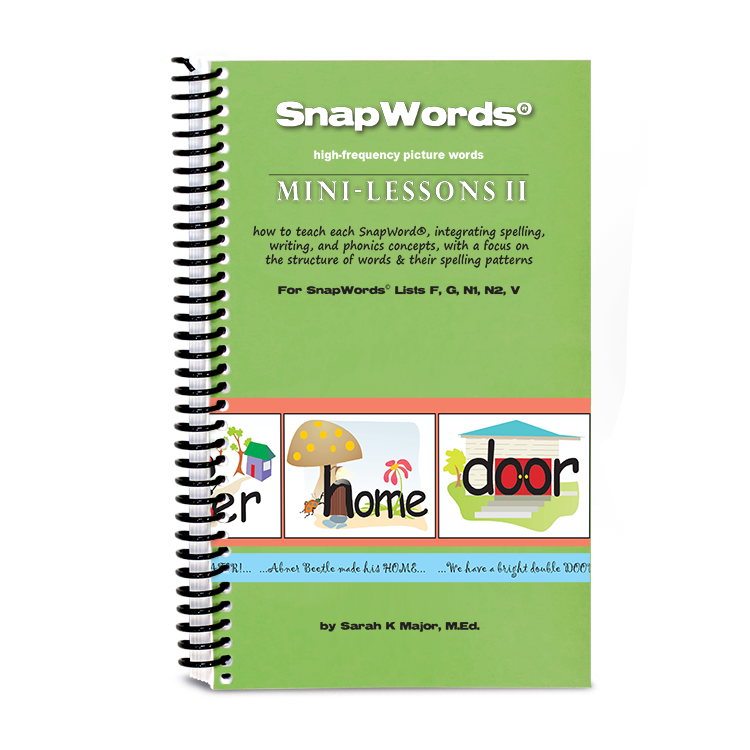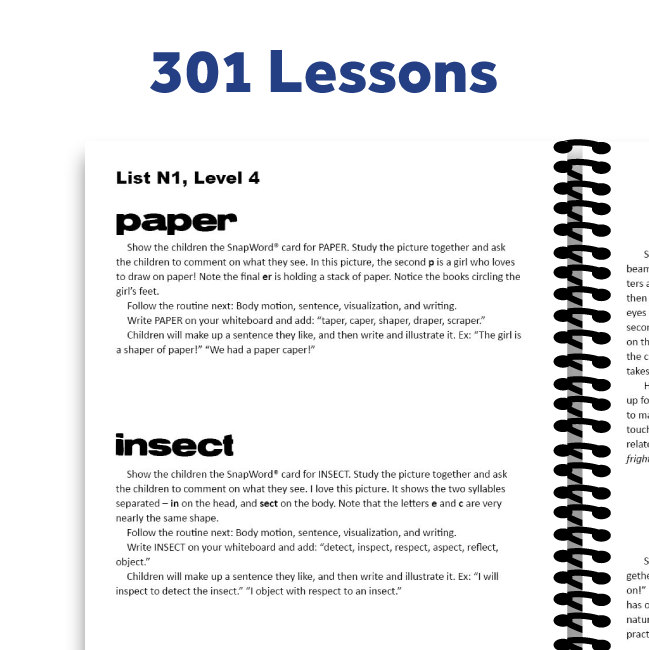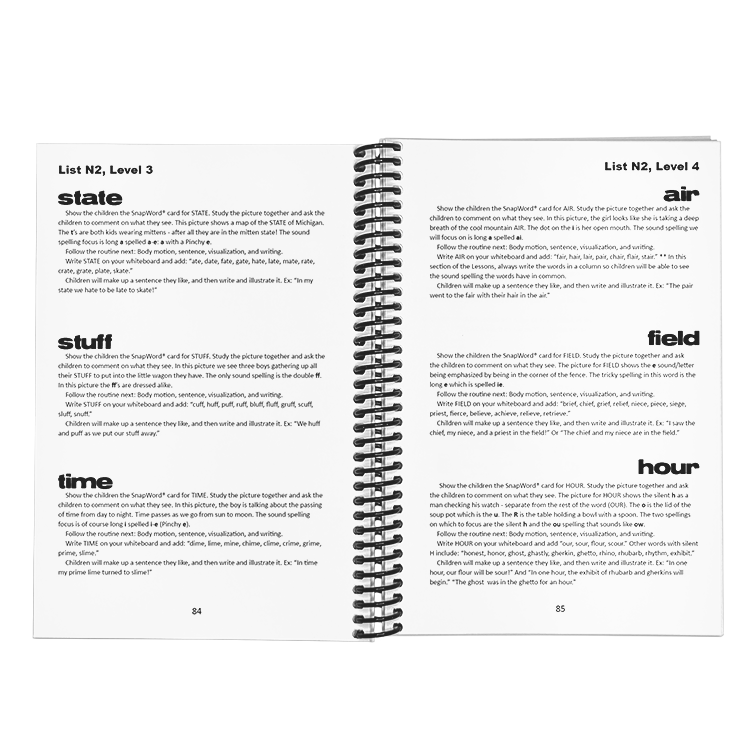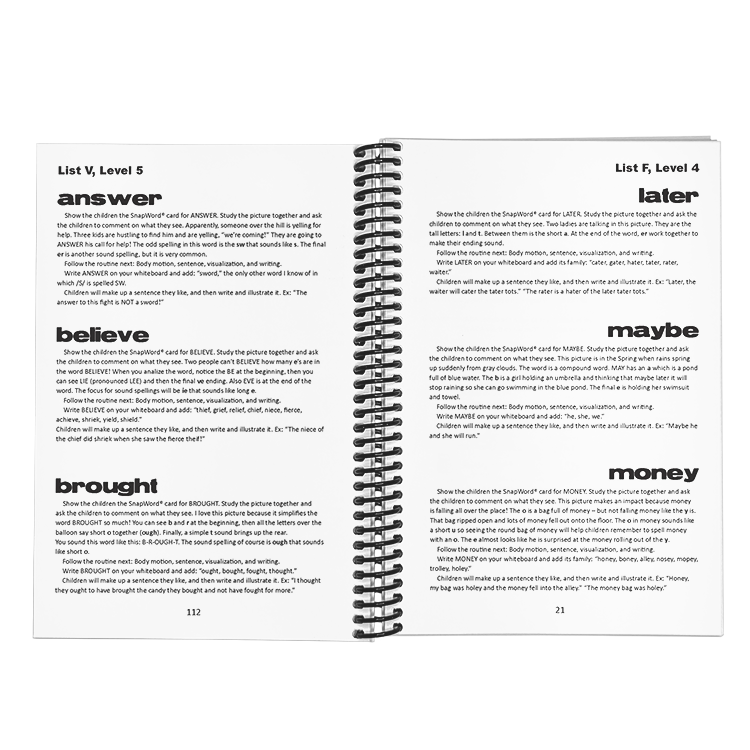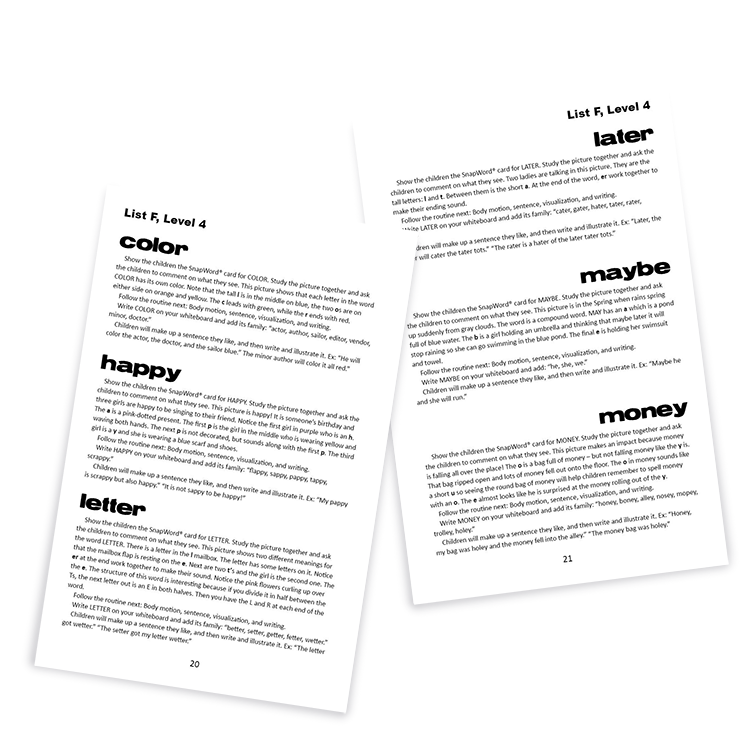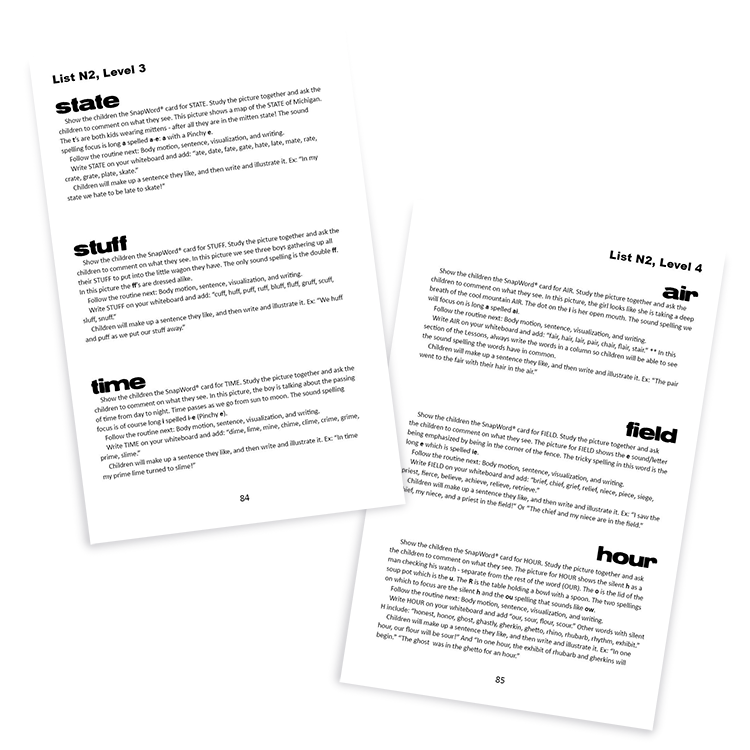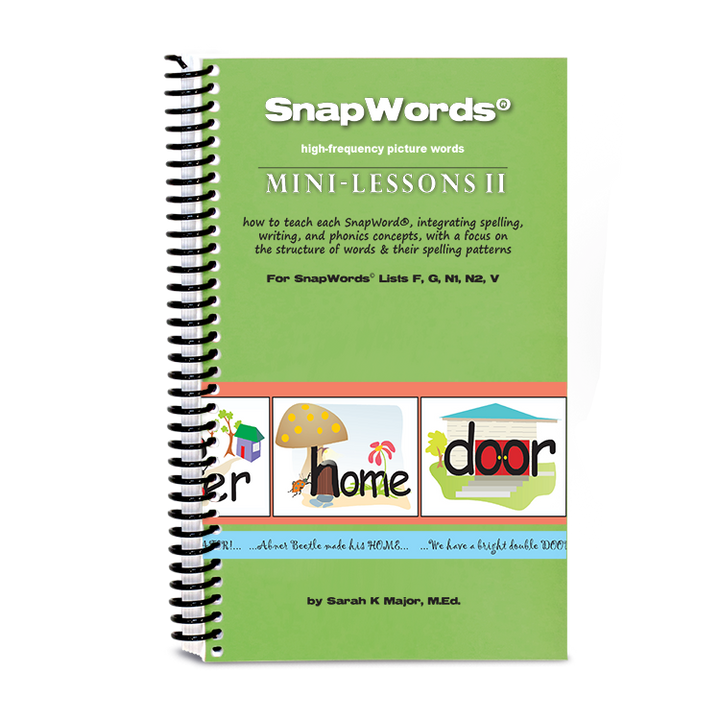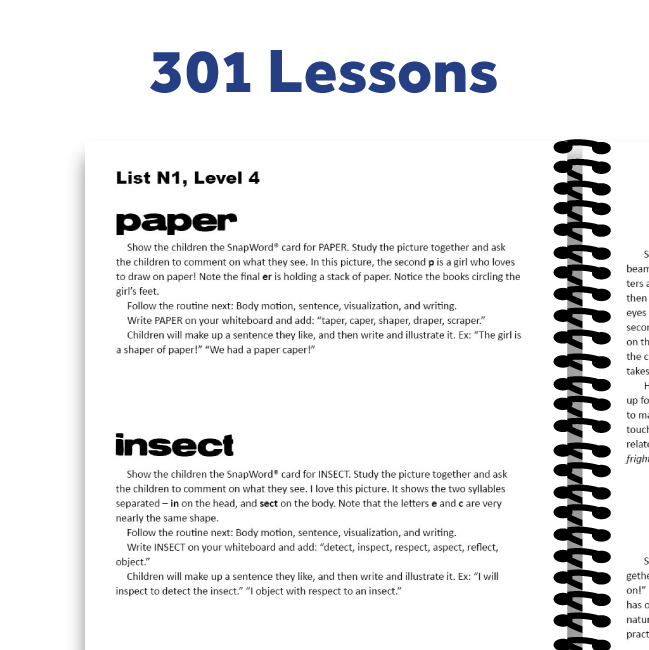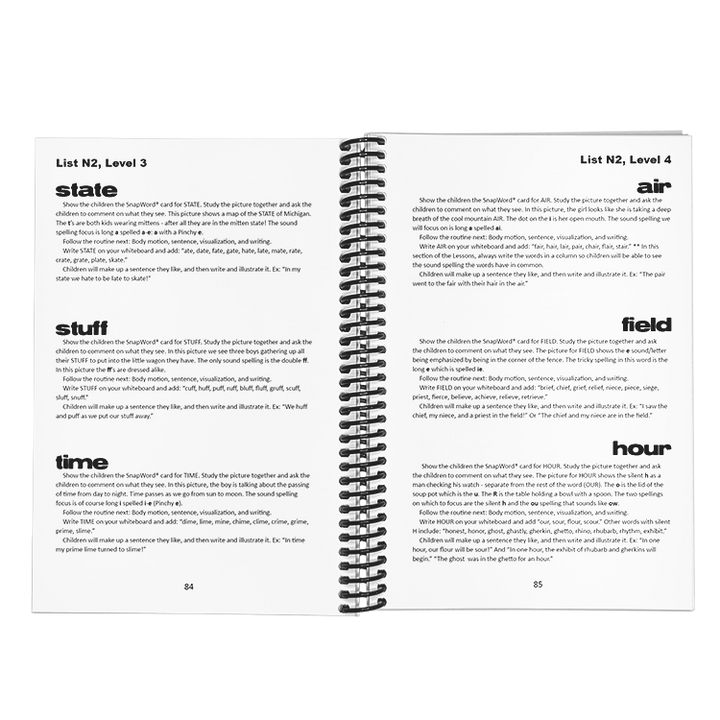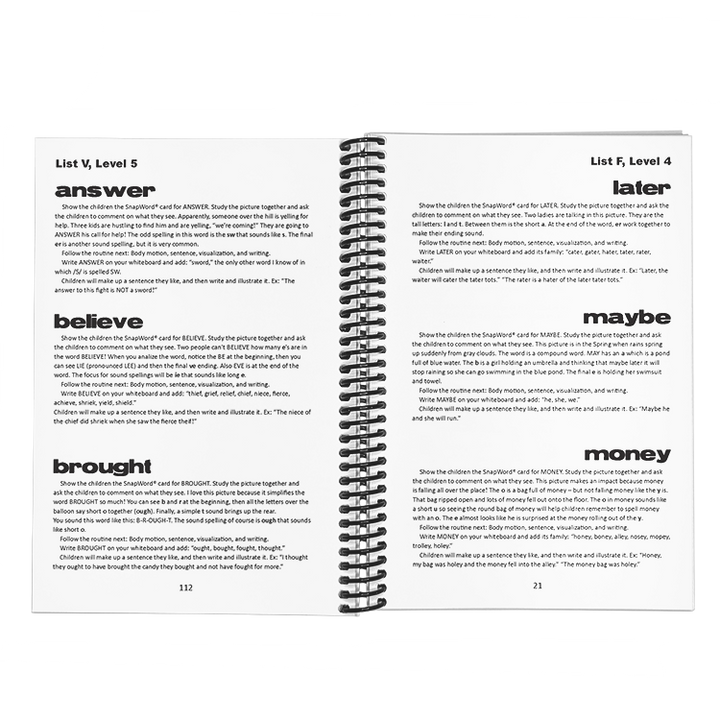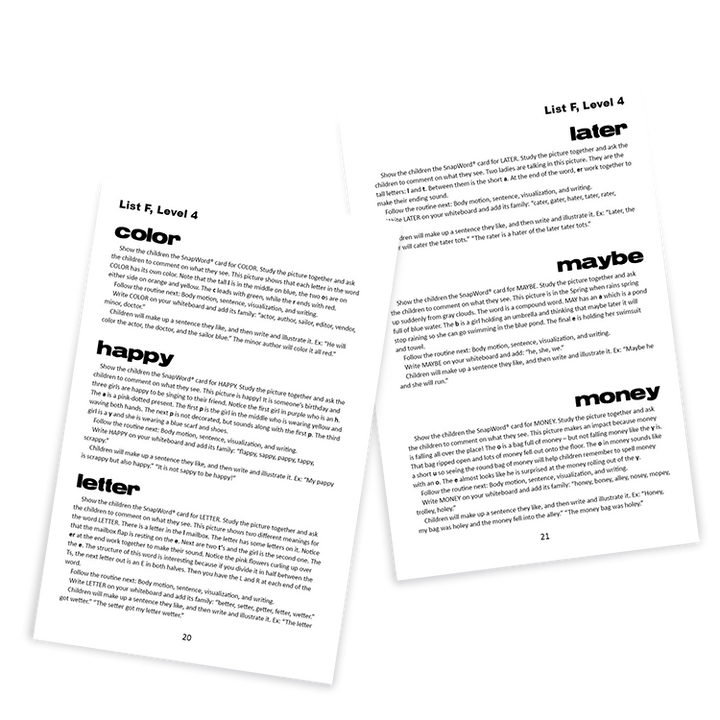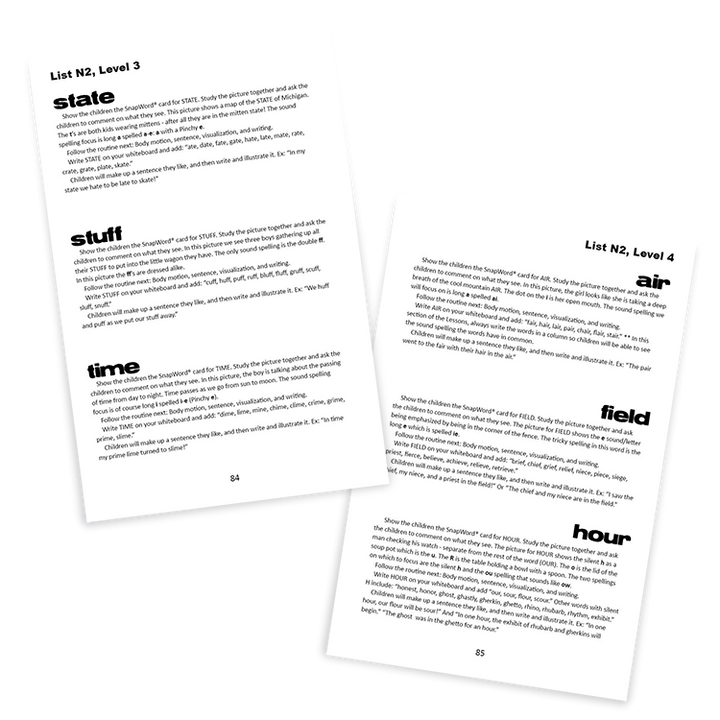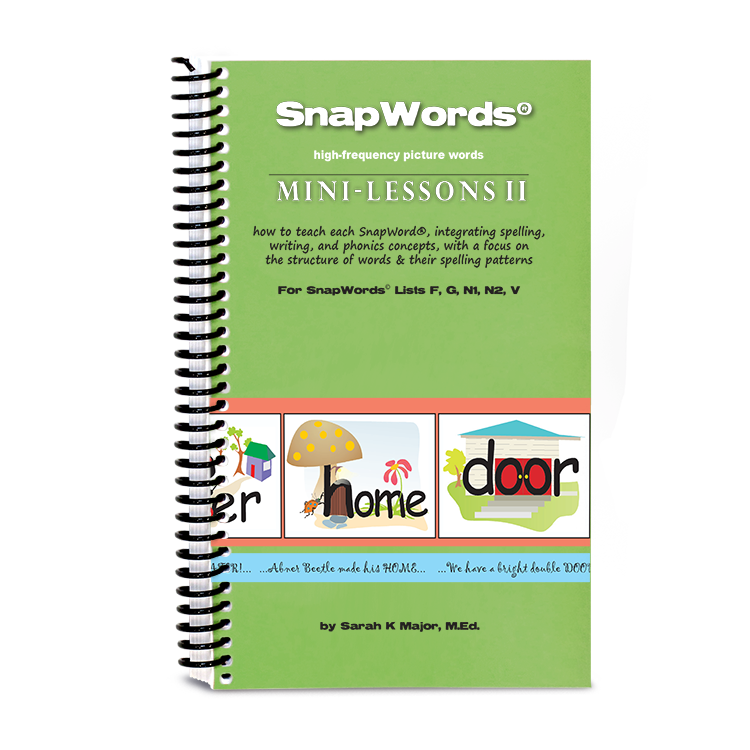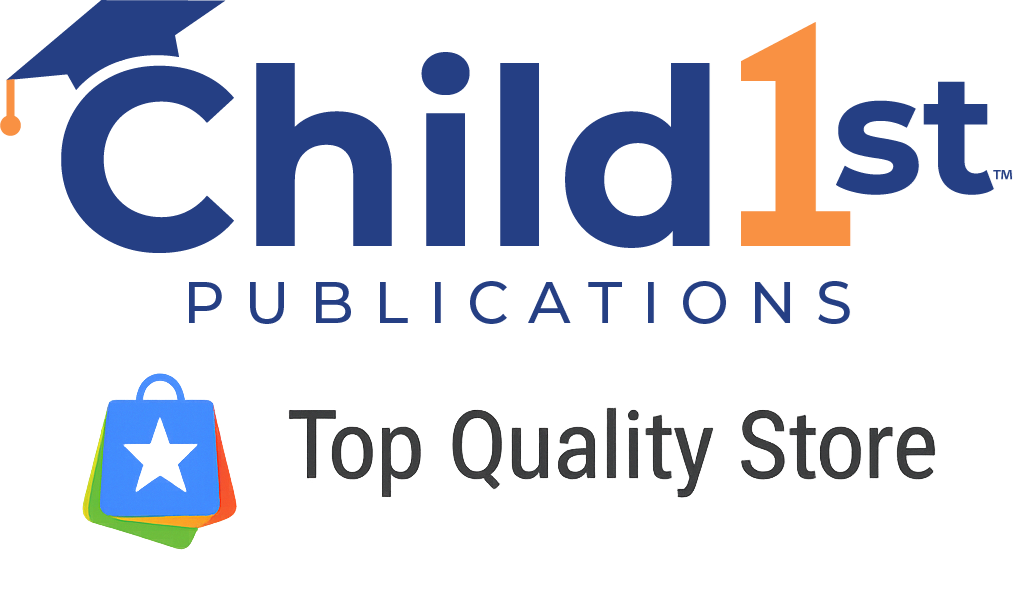Step into the next level of language mastery with SnapWords® Mini-Lessons 2, an exciting companion to Lists F-V. These mini-lessons redefine language education by providing targeted guidance for each SnapWord® in the last five lists in the collection. Dive into dynamic visualization prompts, comprehensive comprehension exercises, in-depth phonics exploration, and vibrant writing practices. Part 1 guides you through effective word introductions and structural analysis, while Part 2 unleashes an array of games and activities. Elevate your teaching experience, making word recognition, phrase and sentence building, and the reading-writing connection a seamless joy. SnapWords® Mini-Lessons 2 is your gateway to a captivating and comprehensive approach to language instruction. Immerse your learners in an educational journey that transforms teaching into an inspiring adventure. Let the exploration continue!
What’s Included
SnapWords® Mini-Lessons 2 includes 132 pages containing:
301 Lessons - One for each SnapWord® in Lists F, G, Nouns 1, Nouns 2, & Verbs
26 Games & Activities for Word Recognition, Reading, Writing, Comprehension, Structural Analysis of Words, & Phonemic Awareness



